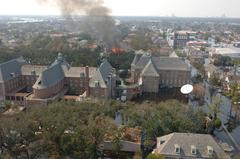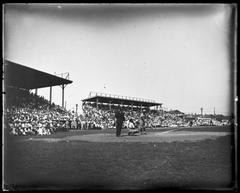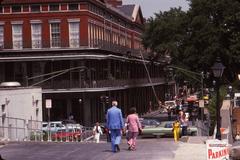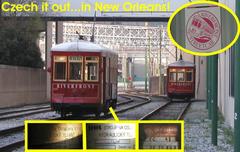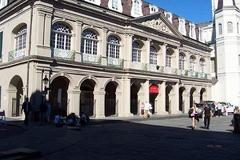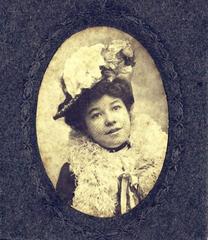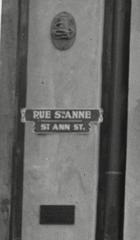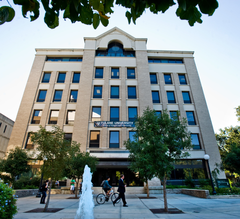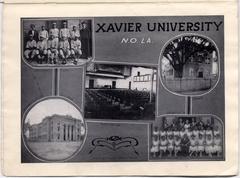
Louisiana State Museum New Orleans: Visiting Hours, Tickets, and Guide
Date: 15/06/2025
Introduction
Located in the heart of New Orleans’ French Quarter, the Louisiana State Museum (LSM) is a cornerstone of the state’s vibrant heritage. Established in 1906, the museum complex today encompasses a network of historic sites and modern exhibit spaces that chronicle Louisiana’s journey—from its colonial beginnings under French and Spanish rule to its pivotal roles in American history. Key sites such as the Cabildo and the Presbytère are not only treasure troves of artifacts, but also architectural landmarks that have witnessed crucial events like the Louisiana Purchase and the landmark Plessy v. Ferguson case.
This guide provides comprehensive, up-to-date information on the museum’s history, visiting hours, ticketing, accessibility, must-see exhibitions, and practical travel tips. Whether you are captivated by colonial architecture, legal history, jazz, or Mardi Gras traditions, the Louisiana State Museum offers a unique and immersive experience for all visitors.
For the latest updates, always refer to the official Louisiana State Museum website and supporting resources (Louisiana State Museum Visiting Hours, Tickets, and Historical Significance in New Orleans; Louisiana State Museum Visiting Guide: Hours, Tickets, and Must-See Historical Sites in New Orleans; Louisiana State Museum Visiting Hours, Tickets, and Exhibitions Guide in New Orleans).
Table of Contents
- Introduction
- Historical Overview
- Louisiana State Museum Sites
- Visiting Information
- Highlights and Exhibitions
- Educational Programs and Guided Tours
- Community Partnerships and Support
- Nearby Attractions and Travel Tips
- Frequently Asked Questions (FAQs)
- Conclusion
- References
Historical Overview
Colonial Foundations and Administrative Roles
The LSM’s origins are closely intertwined with New Orleans’ colonial past. The Cabildo, constructed in 1799, originally served as the Spanish colonial city hall. Its site previously hosted French and Spanish administrative buildings, including a notorious city prison complex. The Cabildo was rebuilt after devastating fires in 1788 and 1794, reflecting the city’s resilience and transformation under colonial rule (New Orleans Historical).
Transition to American Rule and Judicial Significance
After the Louisiana Purchase in 1803, the Cabildo became the seat of the Louisiana Territorial Superior Court and, after statehood, the New Orleans City Council. Later, from 1853 to 1910, it housed the Louisiana Supreme Court and was the site of several historic legal cases, including Plessy v. Ferguson (Audiala). The Presbytère, built in 1791, was initially intended for the clergy but later served various civic functions before joining the museum complex (Wikipedia: Louisiana State Museum).
The Establishment and Growth of the Museum
The Louisiana State Museum was officially established in 1906, following the success of Louisiana’s exhibit at the 1904 Louisiana Purchase Exposition. The Cabildo and the Presbytère became its first managed properties, and the museum system now includes more than a dozen sites statewide (Wikipedia: Louisiana State Museum).
Louisiana State Museum Sites
The Cabildo
Located at 701 Chartres Street, adjacent to St. Louis Cathedral, the Cabildo is notable for its Spanish colonial architecture and its role in Louisiana history. The building features exhibitions such as “People and Power: Building History at the Cabildo,” exploring political and legal developments, and houses important artifacts related to the Louisiana Purchase (People and Power: Building History at the Cabildo).
The Presbytère
Built in 1791, the Presbytère stands next to the Cabildo and features two major permanent exhibits:
- “Living with Hurricanes: Katrina and Beyond”—examining the impact of hurricanes on Louisiana.
- “Mardi Gras: It’s Carnival Time in Louisiana”—showcasing the pageantry, costumes, and traditions of Mardi Gras.
1850 House
Located in the Lower Pontalba Building on Jackson Square, this restored row house offers a glimpse into the daily life of middle-class families in antebellum New Orleans.
Madame John’s Legacy
This rare example of French colonial architecture at 632 Dumaine Street was constructed after the 1788 fire and reflects both French and Spanish influences (New Orleans Historical).
Old U.S. Mint (New Orleans Jazz Museum)
Situated at 400 Esplanade Avenue, the Old U.S. Mint is the only mint to have produced both American and Confederate coinage. It now houses the New Orleans Jazz Museum, with exhibitions on jazz history, rare musical instruments, and regular concerts (Louisiana State Museum).
Visiting Information
Hours and Ticketing
- Visiting Hours: Most LSM sites are open Tuesday through Sunday, generally from 9:00 or 9:30 AM to 4:30 PM. Closed Mondays and major holidays. Always confirm specific site hours on the official website.
- Ticket Prices: Standard adult admission is $10, with discounts for seniors, students, children, and Louisiana residents (often free with valid ID). Children under 6 enter free. Combination tickets are available for multiple sites. Tickets can be purchased online or at entrances (Louisiana State Museum Visiting Hours, Tickets, and Exhibitions Guide in New Orleans).
- Group Rates: Discounted rates for groups of 10 or more; advance booking recommended.
Accessibility
- Most main sites are wheelchair accessible, with elevators and accessible restrooms. Some historic buildings, such as the 1850 House and Madame John’s Legacy, have limited accessibility due to preservation constraints. For accessibility details, contact the museum in advance (Explore Louisiana).
Facilities and Amenities
- Restrooms and climate-controlled environments at all main sites.
- Gift shops at The Cabildo, The Presbytère, and the Jazz Museum.
- Seating areas and benches throughout.
- Photography: Non-flash photography allowed except in restricted exhibits.
- Food and drink: Not permitted inside exhibition spaces.
Highlights and Exhibitions
- Permanent Galleries: Featuring the Louisiana Purchase document, Mardi Gras costumes, and artifacts from colonial, antebellum, and civil rights eras.
- Special Exhibitions: Recent and upcoming exhibitions include “Bienvenue Lafayette” (April 10, 2025 – January 18, 2026), commemorating the Marquis de Lafayette’s 1825 tour (Bienvenue Lafayette), and “George Rodrigue: Legacy Exhibition,” showcasing the artist behind the “Blue Dog” (Legacy Art Tour).
- Interactive Displays: Multimedia kiosks and virtual tours enhance visitor engagement.
- Notable Collections: Artifacts reflecting African American, Creole, Cajun, and immigrant histories.
Educational Programs and Guided Tours
- Docent-led tours: Available at select sites and can be scheduled in advance. Daily French Quarter walking tours depart from the 1850 House (Explore Louisiana).
- School Programs: Curriculum-aligned activities and gallery guides for K-12.
- Public Lectures and Events: Regular lectures, concerts (especially at the Jazz Museum), and panel discussions on Louisiana’s social, political, and cultural history.
Community Partnerships and Support
The museum’s preservation, education, and special programming are supported by organizations such as the Louisiana Museum Foundation and Friends groups (Wikipedia: Louisiana State Museum). Partnerships with local cultural institutions enhance exhibitions and outreach.
Nearby Attractions and Travel Tips
- Jackson Square, St. Louis Cathedral, French Market, and numerous restaurants are within walking distance.
- Public transportation via streetcar and bus is convenient; paid parking is available but limited.
- For a full experience, combine your museum visit with exploration of the French Quarter and nearby historic sites.
- Best photo spots: The Cabildo’s façade, Jackson Square, and the interiors of The Presbytère.
Frequently Asked Questions (FAQs)
Q: What are the Louisiana State Museum’s visiting hours?
A: Most sites are open Tuesday–Sunday, 9:00/9:30 AM–4:30 PM; closed Mondays and major holidays. Always check the official website for updates.
Q: How much are tickets?
A: Adults $10; seniors, students, and children receive discounts; Louisiana residents and children under 6 often enter free.
Q: Are the museums wheelchair accessible?
A: Most main sites are accessible, but some historic buildings have limited access. Contact the museum for specifics.
Q: Can I take guided tours?
A: Yes, docent-led and public tours are available at select locations.
Q: Is photography allowed?
A: Non-flash photography is generally permitted except in some exhibits.
Q: Are there family-friendly and group options?
A: Yes, school and group programs require advance booking. The museums are child-friendly.
Conclusion
The Louisiana State Museum is a gateway to Louisiana’s complex and captivating history—offering visitors of all ages an engaging journey through time. With its unique blend of historic sites, interactive exhibits, and educational programming, the LSM is a must-visit for anyone interested in the culture of New Orleans and the broader state. Plan your visit by reviewing the latest hours, tickets, and events on the official website, and enhance your experience with the Audiala app for curated audio guides and real-time updates.
Ready to explore Louisiana’s heritage? Download the Audiala app, follow LSM on social media, and immerse yourself in the stories that shaped the state.
References and Further Reading
- Louisiana State Museum Visiting Hours, Tickets, and Historical Significance in New Orleans
- Louisiana State Museum Visiting Guide: Hours, Tickets, and Must-See Historical Sites in New Orleans
- Louisiana State Museum Visiting Hours, Tickets, and Exhibitions Guide in New Orleans
- Louisiana State Museum Visiting Hours, Tickets, and Visitor Guide for New Orleans Historical Sites
- New Orleans Historical
- Wikipedia: Louisiana State Museum
- Explore Louisiana Museum Guide
- WhichMuseum Visitor Information
- Bienvenue Lafayette
- Legacy Art Tour

